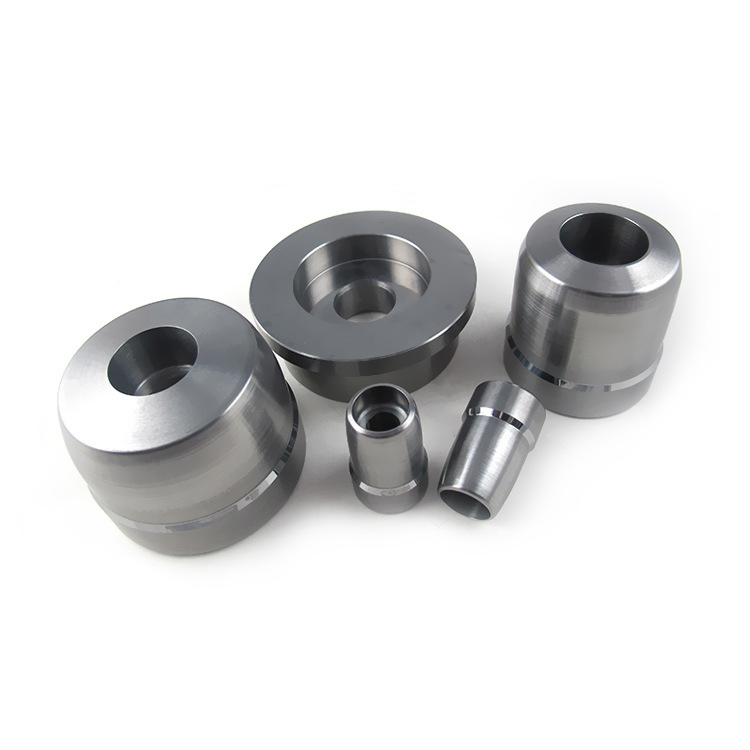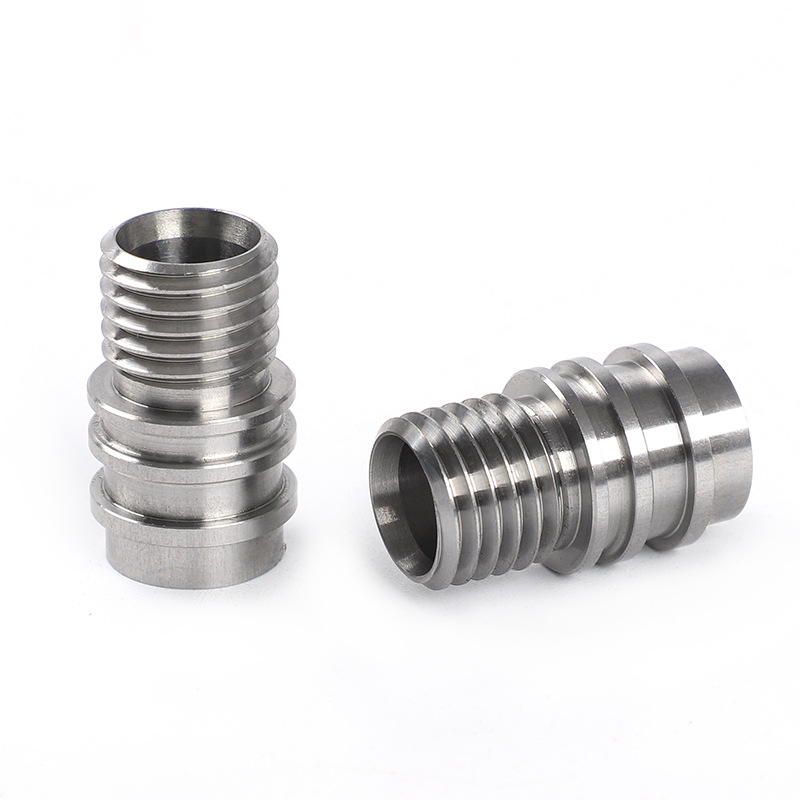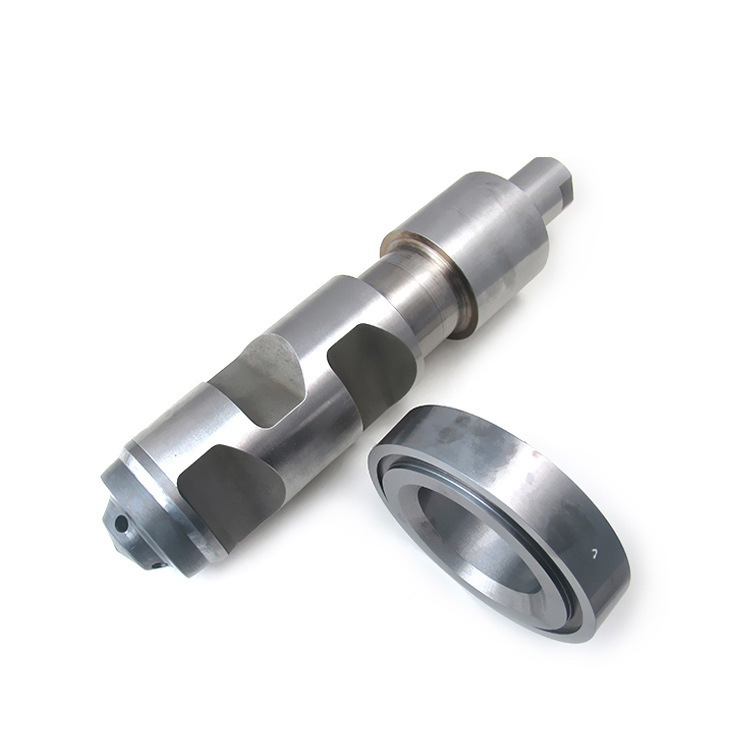Tungsten vs. Titanium: Complete Material Selection Guide (2025) | Properties & Applications
Decoding the Material Composition and Core Properties
Tungsten: What It Is

Tungsten has the highest melting point of all metals. This amazing heat resistance lets tungsten keep its shape even in extremely hot conditions that would melt other metals. It's also incredibly heavy for its size. In fact, tungsten weighs about 19.3 grams per cubic centimeter, making it one of the heaviest elements on earth. Tungsten carbide is extremely hard. It ranks between 8.5 and 9 on the Mohs scale, which means it's very difficult to scratch or wear down. The material can handle strong pulling forces without breaking. It barely expands when heated, unlike many other metals. Tungsten conducts electricity well. It also resists rust and damage from many harsh chemicals, which helps it last a long time in tough conditions.
Titanium: A Really Useful Metal

Titanium has some special qualities that make it different from tungsten. It can melt at a high temperature, around 1668°C, but it melts easier than tungsten. Also, titanium is much lighter than tungsten. If you measure how heavy it is for its size, titanium is about 4.5 grams per cubic centimeter. On a scale that measures hardness, titanium is about a 6. This means it's pretty hard, but not as hard as something like tungsten carbide. However, titanium is very strong for how light it is. This is called a good strength-to-density ratio, and it's great when you need something strong but not heavy. Another great thing about titanium is that it doesn't rust easily. When air or water touches titanium, it makes a protective layer on the surface. This layer stops rust and corrosion, even in harsh places. Plus, titanium is safe for your body and doesn't usually cause allergies. This means doctors can use it inside people. It's also slightly magnetic, meaning it can be weakly pulled by a magnet. All these things make titanium a really good material when you need something light, rust-proof, and safe for the body.
Tungsten: The Heavyweight Champion – Uses & Strengths
Why Tungsten Rocks
Tungsten has special traits that make it super useful. It melts at the highest temperature of any metal. This lets it work in extreme heat where others would melt. It’s also crazy hard—especially when mixed with carbon to make tungsten carbide. This hardness stops scratches and wear, perfect for tools that get beaten up.Tungsten is super heavy. A small chunk weighs a lot, which is great for balancing race cars or blocking radiation. It conducts electricity and heat well, so it’s used in electrical parts and cooling systems. It doesn’t rust easily, even in harsh conditions. Plus, it stays strong when things get hot, making it key for high-stress jobs.
Where You’ll Find Tungsten
Tungsten’s strengths make it a star in many fields. Old-school light bulbs used tungsten filaments because they glow without melting. While bulbs are fading out, tungsten still shines in industrial tools. Drill bits and cutting blades made of tungsten carbide last way longer than regular ones.Welding gear uses tungsten electrodes because they handle intense heat. Its weight helps planes and race cars stay balanced. Hospitals and labs use it to shield against X-rays. High-temperature furnaces rely on tungsten heating elements—they won’t melt.
Even the military loves it. Armor-piercing bullets use tungsten to smash through tough targets. And guess what? Tungsten rings are trendy now. They’re scratch-proof and look sleek. From factories to jewelry stores, tungsten’s toughness makes it a winner.
The Other Side: Why Tungsten Isn't Always the Best
Tungsten is strong, but it also has some problems. One big issue is that it can break easily. Pure tungsten is especially brittle, meaning it can crack if you hit it too hard. This makes it not great for things that might get bumped or dropped. Also, it's really hard to shape tungsten. Because it's so hard, you need special tools to cut it. This can make things more expensive to make. Another thing to think about is the price. Tungsten usually costs more than metals like titanium or steel. If you don't have a lot of money, this can be a problem. While being heavy can be good sometimes, it's also a bad thing in other situations. Tungsten is very dense, which means it's heavy for its size. If you want something light, like a phone or a plane part, tungsten might not be the best choice.Think about rings made of tungsten. A problem with these rings is that you can't easily change their size. They are too hard to resize like gold rings. If you try to make them bigger or smaller, they might break. Also, some tungsten jewelry has nickel or cobalt in it. These metals can cause allergies for some people. And if you need to take off a tungsten ring in an emergency, it can be tough. You might need special tools to cut through it because it's so hard.
So, you need to think carefully before using tungsten. Because it breaks easily, it might not be good for things that shake a lot. For planes and rockets, being heavy is a big problem. Even though tungsten is strong, its weight can make it less useful. And for things like jewelry or medical parts, allergies are a concern. You have to think about these downsides when you decide if tungsten is the right material for the job.
Titanium: Strong and Light - Why It's So Great
Titanium is a really useful metal because it has many good things about it. One of the best things is that it's strong but also light. This is called a high strength-to-weight ratio, and it's great when you need something tough that isn't heavy. Another great thing is that it doesn't rust easily. This is because it makes a special layer that protects it from things like seawater and harsh chemicals. Also, titanium is safe for people's bodies and doesn't cause allergies. This makes it good for things that go inside the body or touch the skin. Compared to steel, titanium is much lighter. It's about half the weight of steel but just as strong.This can save a lot of weight when building things. It also doesn't crack as easily as tungsten. This means it can handle stress better in some situations. Making things out of titanium is also easier than making things out of tungsten. It's easier to cut and shape titanium. You can even make titanium colorful. This is done by a process called anodizing, which makes it look nice for jewelry and other things. If you wear a titanium ring and need to take it off quickly, it's safer than a tungsten ring. You can cut titanium rings off more easily in an emergency. Plus, titanium is good for the environment because it can be recycled completely. It can also handle heat pretty well, though not as much heat as tungsten. Some types of titanium even work well when it's very cold. Finally, titanium is not magnetic. This is helpful for some special uses. All these good things make titanium a very useful material for lots of different things.
What Titanium is Used For
Because titanium is so great, it's used in many different industries. Think about airplanes. They use titanium a lot because it's strong and light. It's used for the main body, engine parts, and the wheels that land the plane. This helps planes fly better and save gas. Doctors also use titanium a lot for things that go inside people. Things like new hips and knees, fake teeth, and tools for surgery are often made of titanium. This is because it's safe for the body and doesn't rust inside. Even sports equipment uses titanium. Golf clubs, tennis rackets, and bikes can be made better with lightweight and strong titanium parts.Jewelry is another place you find titanium. Rings, earrings, and necklaces made of titanium are light, strong, and don't cause allergies. Factories that make chemicals also use titanium. They use it for tanks, pipes, and heaters because it doesn't get ruined by harsh chemicals. Things that are used in the ocean, like boats and oil platforms, also use titanium. This is because seawater doesn't corrode titanium. Cars can even have titanium parts. Engine parts and exhaust systems can be made stronger and lighter with titanium. Buildings can even use titanium. Roofs and walls made of titanium last a long time and look cool. Even your phone or laptop might have titanium in it. It makes them strong but light. And something you might not know is that titanium is also used to make white paint. Titanium dioxide is a white powder that makes paint and coatings white.
Things to Think About: Why Titanium Isn't Always Perfect
Titanium is great in many ways, but it also has some problems. One big problem is that it costs a lot. It's more expensive than metals like aluminum and steel. This can be a problem if you are making a lot of something and need to keep costs down. Making things with titanium can also be tricky. It's harder to shape titanium compared to iron or aluminum. You need special ways to do it. Also, titanium melts at a very high temperature and reacts easily with other things when it's hot. This makes it harder to weld. You often need special steps and places to weld titanium. Even though it's strong, titanium can get scratched more easily than tungsten carbide.This means it can get damaged on the surface over time. Compared to super hard tungsten carbide, titanium is softer. If you hit it really hard, it can bend out of shape. Changing the size of titanium rings can be hard too. You can only make them a little bigger or smaller. If your finger size changes a lot, this can be annoying. Another thing is that titanium doesn't carry heat or electricity very well. This can be important if you need a material that lets heat or electricity flow easily. If titanium gets too hot, over about 430°C, it starts to get weaker. This means you can't use it in really hot places where tungsten works better. Making titanium also takes a lot of energy. This makes it more expensive and can be bad for the environment. And getting titanium from the ground can also hurt the environment. It can destroy animal homes and damage the soil.
Things to Consider When Using Titanium
You need to think about these problems when you want to use titanium. The high cost can be a big deal for some businesses. If they don't have much money or need to make a lot of things, they might choose something cheaper. Titanium is okay with heat, but it's not great when it gets super hot. For things that get really hot, like some airplane parts or factory machines, tungsten might be a better choice. If you need something that won't wear down easily, like tools for cutting hard stuff, tungsten carbide is probably better than titanium. So, you really need to think about what you need the material to do before you decide if titanium is the best option.Tungsten vs. Titanium: A Head-to-Head Comparison
To provide a clear and concise overview, the following table summarizes the key differences between tungsten and titanium across several important parameters:| Property | Tungsten | Titanium |
|---|---|---|
| Melting Point | Highest of all metals (3410-3422°C) | Lower (1668°C) |
| Density | Very High (19.3 g/cm³) | Lower (4.5 g/cm³) |
| Hardness (Mohs) | 8.5-9 (as Tungsten Carbide) | 6 |
| Tensile Strength | High (142,000 psi) | Moderate |
| Scratch Resistance | Excellent | Good |
| Crack Resistance | Lower | Higher |
| Weight | Heavier | Lighter |
| Cost | Higher | Lower |
| Hypoallergenic | Mostly Yes, but depends on alloy (Nickel/Cobalt content) | Yes |
| Common Applications | Cutting Tools, Radiation Shielding, Jewelry, Lightbulb Filaments | Aerospace Components, Medical Implants, Jewelry, Sports Gear |
Picking the Best Metal: Tungsten or Titanium?
Choosing between tungsten and titanium depends on what you need it for. You have to think about what's most important for each job.
Jewelry
When it comes to jewelry, it's all about what you care about most. Tungsten carbide is great because it doesn't scratch easily. Rings made of tungsten will stay shiny and new-looking for a long time. But some people like titanium better because it's lighter. Titanium is also good for people with sensitive skin because it usually doesn't cause allergies. The weight difference between tungsten and titanium can be pretty big. Some people like the feel of a heavier ring, while others prefer something lighter. Think about what happens if you put a lot of pressure on a ring. Tungsten rings are more likely to break if you hit them hard. Titanium rings might bend instead of breaking.Aerospace
For airplanes and spaceships, titanium is really important. It's strong but also light, which is a huge advantage. This helps planes use less gas and fly better. Tungsten can handle very high heat, which could be useful in some parts. However, tungsten is very heavy. This weight often makes it not the best choice for the main parts of planes. But, tungsten can be used in small ways in planes. For example, they can use heavy tungsten parts to help balance the plane.Medical
When it comes to putting metal inside the body, titanium is usually the best choice. It works well with the human body and doesn't rust. This is super important for things like new hips, knees, and fake teeth that stay in your body for a long time. Tungsten is very dense, meaning it's good at blocking radiation. So, in medicine, tungsten is mostly used to protect people from radiation during things like X-rays.Industrial
In factories and other industrial places, tungsten is useful because it's so hard and can handle high heat. It's great for making tools that cut things, parts that don't wear down easily, and things that need to work in hot places like furnaces. Titanium is really good at resisting rust and damage from chemicals. So, factories that make chemicals often use titanium for tanks and pipes because it can handle harsh stuff.The Best Choice?
So, is tungsten or titanium better? The answer is: neither one is always "better." The best metal depends on what you need it to do. You need to think about things like how strong it needs to be, how hot it will get, how heavy it can be, if it will be around things that cause rust, if it needs to be safe for the body, and how much money you have to spend. In summary, both tungsten and titanium are highly valuable materials with distinct properties that dictate their suitability for various applications. Tungsten stands out for its exceptional hardness, highest melting point, and high density, making it ideal for extreme conditions and wear-resistant applications. Titanium, on the other hand, offers a remarkable strength-to-weight ratio, excellent corrosion resistance, and biocompatibility, making it a prime choice for weight-sensitive, corrosive, and biomedical applications. Ultimately, the decision between tungsten and titanium requires a careful consideration of the specific performance requirements and environmental factors of the intended use. By understanding their individual strengths and limitations, engineers, designers, and consumers can make informed choices, leveraging the unique advantages each of these remarkable metals offers.
-
Which material is stronger?
Tungsten beats titanium in hardness (Mohs scale: 8.5-9 vs 6). It resists bending or denting better. But strength isn’t just about hardness. While tungsten handles squeezing forces well, titanium fights stretching forces better and cracks less. Titanium’s strength-to-weight ratio tops most metals. That’s why planes and race cars use it—it’s strong without being heavy.
-
Which material is lighter?
Titanium is way lighter. At 4.5 g/cm³, it’s 57% lighter than tungsten (19.3 g/cm³). This makes titanium perfect for jets, medical tools, or comfy jewelry. Tungsten’s density—like gold’s—gives it heft. Great for weights or blocking X-rays, but bad for lightweight needs.
-
Which material is more scratch-resistant?
Tungsten wins here. Its extreme hardness keeps jewelry shiny for years. Titanium scratches easier but bends instead of breaking. Tungsten’s toughness comes with a downside: hard hits might crack it. Titanium survives drops better, even if it gets scuffed.
-
Is titanium hypoallergenic?
Yes. Titanium rarely irritates skin, even for allergy-prone folks. Doctors love it for implants because bodies accept it well. Its rust-proof nature helps in wet environments. Jewelers use it for rings since it’s safer than nickel-heavy metals.
-
Can tungsten rings be resized?
Yes. No. Tungsten’s hardness and high melting point make resizing impossible. If your finger size changes, you’ll need a new ring. Some stores offer free replacements to fix this issue.
-
Can titanium rings be resized?
Rarely. Titanium’s strength and heat resistance make stretching tricky. Pros might adjust it slightly, but big changes won’t work. Get the size right upfront. Its light feel helps it fit better than heavier metals anyway.




